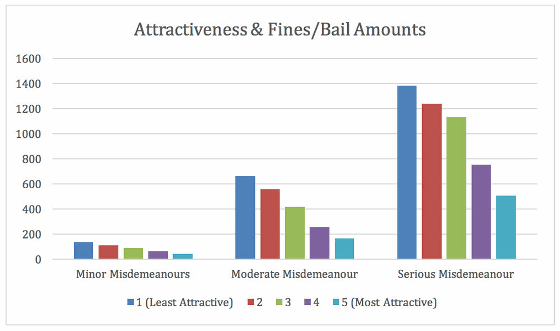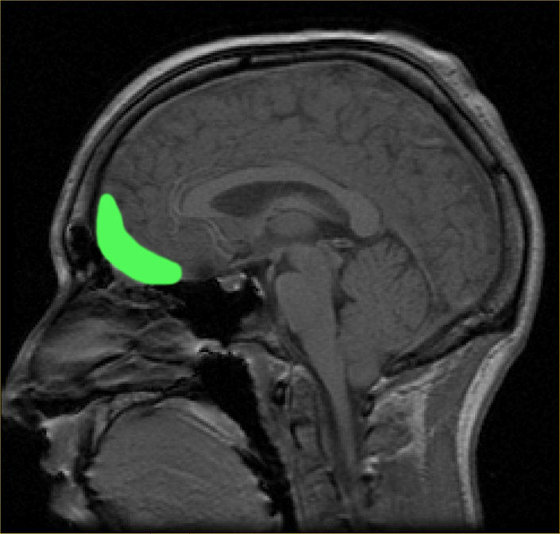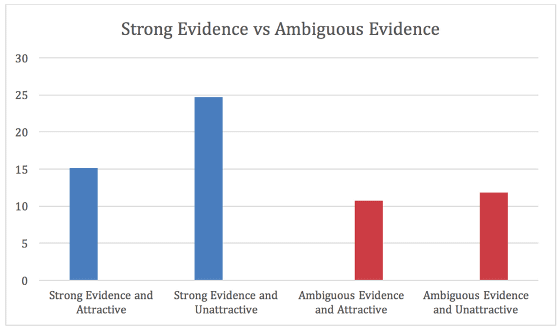'Attractive people' have shorter criminal sentences than those who do not

According to the survey so far, doctors tend to neglect even if a person with a good appearance complains of pain, and it is hard to be hired if the appearance is better than the interviewer, so to speak, ``Beauty does not always benefit''.
Physical Attractiveness Bias in the Legal System — The Law Project
https://www.thelawproject.com.au/insights/attractiveness-bias-in-the-legal-system
An analysis of Hollier's research to date reveals that 'physical attraction' influences trials in the following ways:
◆1:
Physical attraction influences the 'criminal life' of judges, with unattractive criminals lengthening the sentence and attractive criminals shortening the sentence.
◆2:
The guilty/innocent judgment itself is largely unaffected by charm. Attractive criminals were convicted as well as unattractive criminals.
◆3:
In a jury, unattractive criminals tend to be sentenced to much longer prison terms than attractive criminals. However, this result does not apply directly to the criminal, as the jury of the mock trial is not involved in the actual judgment.
◆ 4:
Charm has only a minor effect on the jury's verdict in a mock trial.
Specifically, a study in which police and students rated the attractiveness of more than 2,000 criminals on a scale of 1 to 5 states that 'more criminals are found to be less attractive It has been shown .
The graph below is divided into mild misdemeanor, moderate misdemeanor, and serious misdemeanor from the left, and each person's fine amount evaluated on a scale of 5 from blue (the least attractive) to light blue (the most attractive). Is shown. You can see that the blue graphs have the highest penalties, and the more attractive they are, the lower the penalties.

In addition, a

And a study that investigated the relationship between criminals and judge's judgment, which has so-called 'baby face' features of large eyes, thin brows and high position, large forehead, small jaw, round face,
In the graph below, the vertical axis shows the probability that a judge judges that a crime was intentional, and the horizontal axis shows the degree that the criminal's face was a baby face. The larger the number on the horizontal axis, the lower the graph. Therefore, it can be seen that the more babyfaces there are, the less likely they are to be considered intentional.

An analysis of 25 studies examining the effects of physical attraction on simulated jury found significant effects. For example, in a
In this way, it seems that the appeal of people influences the court, but the causal relationship between 'human attraction' and 'judgment' has not yet been clearly shown. Hollier said that unattractive people may be more committed to crime, especially violent crime, than attractive people, and prior knowledge of being 'criminals' in studies influences subject ratings. I point out that there is a possibility. In addition, unattractive people is that quality can not be obtained a valid value in the society because of, some researchers argue that easily lead to crime thing to exist .
'Attractiveness' is described in a variety of words, but in general it is 'intelligent, socially skilled, attractive in character, moral, altruistic, and capable of success. Is recognized. Attractive people tend to be physically and mentally well-earned, earn a lot of money, be promoted and be chosen as business partners. An unattractive person, on the contrary, is understood as a person who is not intellectual and has no social skills. According to a 2003 study , there is a 'contrast bias' that emphasizes both characteristics when comparing attractive and unattractive people directly. In addition, it is also known that the activity of the medial orbitofrontal cortex involved in the processing of positive emotions and stimuli varies with the degree of attractiveness and moral correctness (PDF file) .

As you can see, the 'bias due to the attractiveness of people' is hardly noticeable to people. In other words, Hollier says that people can't morally blame people who have an unconscious bias because people don't consciously underestimate 'unattractive people.'
Hollier cites a study of 'slow thinking' as a way to remove the bias of human attraction. Hurry thinking is susceptible to psychological distortions, and “thinking and thinking” helps reduce bias.
The graphs below are shown in a 2015 study of 124 female students, and each graph shows from the left that the defendant has “strong evidence/attractive” “strong evidence/unattractive” The number of years of sentencing in cases of 'ambiguous evidence/attractive' and 'ambiguous evidence/unattractive'. Strong evidence lengthens the sentence for 'unattractive' people, but a lack of evidence means that decisions are less appealing. From here on, it is believed that avoiding situations that jump to strong evidence and pondering over it is one way to reduce bias.

Related Posts:
in Note, Posted by darkhorse_log







